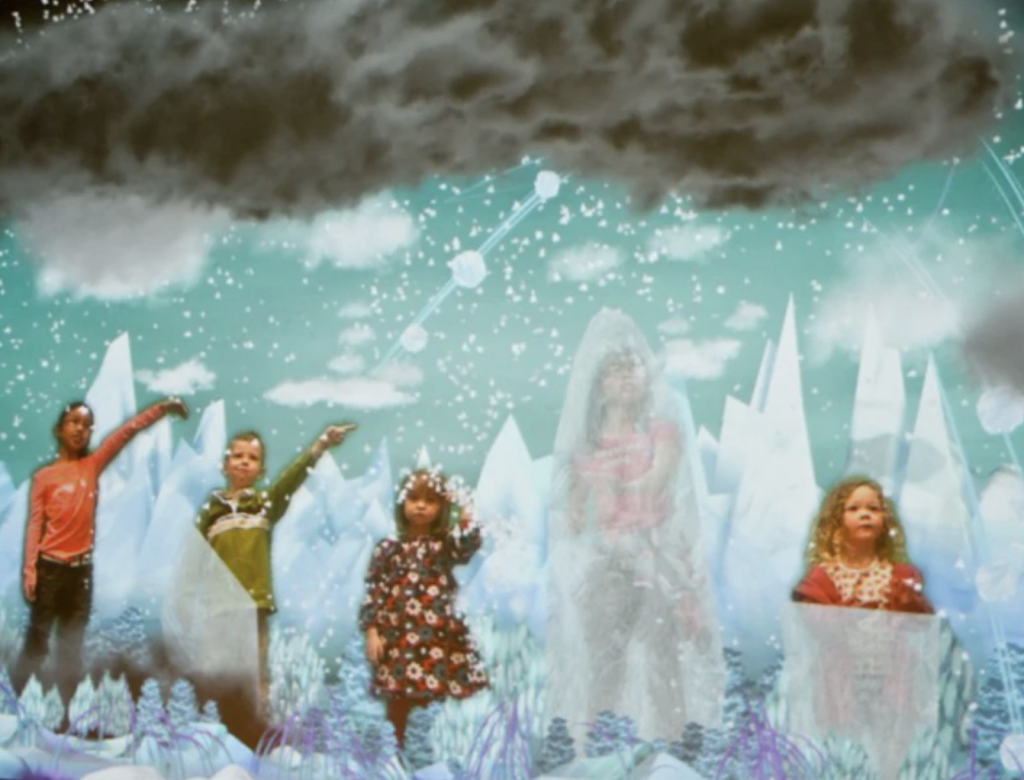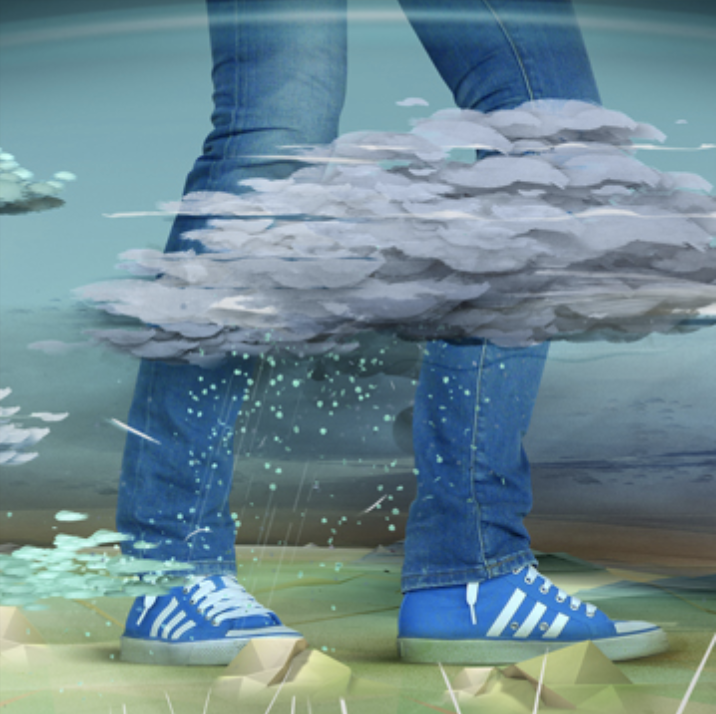The work is called “Weather Worlds” by Emily Gobeille. This work is an interactive installation that “grants” children with superpowers to “control the weather.” The work uses a camera and can green-screen anyone who interacts with it in real-time. This installation can project the image of lightning bolts flying out of the hands of the user, or clouds coming from the palms of their hands. I found this project interesting because it works so incredibly fast, that the person in sight of the camera will be immediately projected onto the screen and can control aspects of the interactive code. On top of this, I really liked the multi-user aspect of this work, as many users can be projected onto the screen at once, which would allow for more interaction, and less line-waiting. Though I do not know exactly how or what went into generating this algorithm for this project, I can already understand that it likely took a lot of time to calibrate correctly so that the green-screened images would not overlap or skew. I personally really admire this because I feel that as time passes, the importance of art for a child’s education is always being undermined, and I feel that this installation does a great job of making kids interested into artworks like this. This project combines both an artistic flare and technological touch that is perfect for the new generation of children who are constantly interacting with smart devices.
Emily Gobeille is a creator of high-end interactive installations for children. For the past few years, she’s studied and worked with motion graphics, concept development, interaction design, and user interaction. Her experiences over the years include web, print, TV< wireless platforms, and installations. It appears that she works in California, New York, and Miami as she runs her own interactive studio called Design I/O, which is located in those areas. Much of Emily Gobeille’s work centers around how children think and behave, which influences what type of interactive installations she makes. She claims to be intrigued by the way children think and play, and she often tries to think like a child when creating her installations.



![[OLD FALL 2020] 15-104 • Introduction to Computing for Creative Practice](wp-content/uploads/2021/09/stop-banner.png)